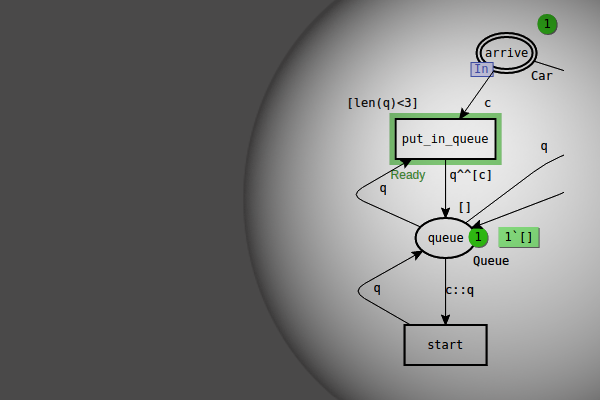August 25, 2014Dmytro Glomozda shared this idea1) I use CPN Tools 4.0.0, Windows 7 x64 2) I built a simple net with two places (p1 and p2) and one transition (t1) between them. Both p1 and p2 are of type INT. p1 is marked with a token ’10’. Token is taken to the transition via an arc carrying variable i : INT, then discrete (1, i) is sent to p2. Then I built SS graph of the system. 3) I expected the SSG would contain 11 nodes: 1 starting node and 10 successor nodes, each corresponding to a possible result of random generation. 4) Instead I got an SSG with 2 nodes: 1 starting node and 1 successor, corresponding to one of possible results of random generation (‘1’). When I changed the net slightly (by renaming t1 into t2) and regenerated SSG, it produced another 2-noder, this time with another result of random generation (‘3’). See attached file. I think this is an important issue since for if the SSG doesn’t cover all possible variations, it’s impossible to make sure all variants are safe (for instance, we can’t really say whether deadlock is possible when some processes are evoked randomly according to the randomly generated ID number). Sincerely yours, Dmytro Glomozda August 26, 2014Michael Westergaard (Code and Support Guy, CPN Tools) respondedDeclined This is intended behavior. The random functions do not and won’t in the future work with the state-space tools. See Nondeterministic nets for more information and workarounds. |

You must be logged in to post a comment.